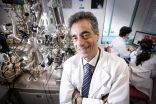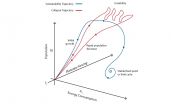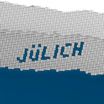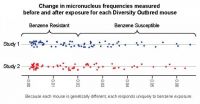(Press-News.org) A major new Series on health and ageing, published in The Lancet, warns that unless health systems find effective strategies to address the problems faced by an ageing world population, the growing burden of chronic disease will greatly affect the quality of life of older people. As people across the world live longer, soaring levels of chronic illness and diminished wellbeing are poised to become a major global public health challenge.
Worldwide, life expectancy of older people continues to rise. By 2020, for the first time in history, the number of people aged 60 years and older will outnumber children younger than 5 years. By 2050, the world's population aged 60 years and older is expected to total 2 billion, up from 841 million today. 80% of these older people will be living in low-income and middle-income countries [Paper 1].
The increase in longevity, especially in high-income countries (HICs), has been largely due to the decline in deaths from cardiovascular disease (stroke and ischaemic heart disease), mainly because of simple, cost-effective strategies to reduce tobacco use and high blood pressure, and improved coverage and effectiveness of health interventions.
However, although people are living longer, they are not necessarily healthier than before-- nearly a quarter (23%) of the overall global burden of death and illness is in people aged over 60, and much of this burden is attributable to long-term illness caused by diseases such as cancer, chronic respiratory diseases, heart disease, musculoskeletal diseases (such as arthritis and osteoporosis), and mental and neurological disorders [Paper 2].
This long-term burden of illness and diminished wellbeing affects patients, their families, health systems, and economies, and is forecast to accelerate. For example, latest estimates indicate that the number of people with dementia is expected to rise from 44 million now, to 135 million by 2050.
"Deep and fundamental reforms of health and social care systems will be required,"* says Dr John Beard, Director of the Department of Ageing and Life Course at the World Health Organization (WHO), and co-leader of the Series with Dr Ties Boerma and Dr Somnath Chatterji, also from WHO. "But we must be careful that these reforms do not reinforce the inequities that drive much of the poor health and functional limitation we see in older age."*
"While some interventions will be universally applicable, it will be important that countries monitor the health and functioning of their ageing populations to understand health trends and design programmes that meet the specific needs identified"*, adds Dr Ties Boerma, Director of the Department of Health Statistics and Informatics at WHO. "Cross-national surveys such as the WHO Study on Global Ageing and Adult Health (SAGE), the Gallup World Poll, and other longitudinal cohorts studies of ageing in Brazil, China, India, and South Korea, are beginning to redress the balance and provide the evidence for policy, but much more remains to be done."* [Paper 3 and Paper 4]
However, the responsibility for improving quality of life for the world's older people goes far beyond the health sector, say the Series authors. Strategies are needed that better prevent and manage chronic conditions by extending affordable health care to all older adults and take into consideration the physical and social environment. Examples include changing policies to encourage older adults to remain part of the workforce for longer (e.g., removing tax disincentives to work past retirement age), emphasising low-cost disease prevention and early detection rather than treatment (eg, reducing salt intake and increasing uptake of vaccines), making better use of technology (eg, mobile clinics for rural populations), and training health-care staff in the management of multiple chronic conditions [Paper 5].
According to Dr Chatterji, also from the Department of Health Statistics and Information Systems at WHO, "Collectively, we need to look beyond the costs commonly associated with ageing to think about the benefits that an older, healthier, happier, and more productive older population can bring to society as a whole."*
INFORMATION:
A car powered by its own body panels could soon be driving on our roads after a breakthrough in nanotechnology research by a QUT team.
Researchers have developed lightweight "supercapacitors" that can be combined with regular batteries to dramatically boost the power of an electric car.
The discovery was made by Postdoctoral Research Fellow Dr Jinzhang Liu, Professor Nunzio Motta and PhD researcher Marco Notarianni, from QUT's Science and Engineering Faculty - Institute for Future Environments, and PhD researcher Francesca Mirri and Professor Matteo Pasquali, from Rice ...
Toronto, ON - For most cancer patients, primary tumours are often not the most deadly. Instead, it is the metastatic tumours - tumours that spread from their original location to other parts of the body - that are the cause of most cancer deaths.
The catalysts behind the formation of these deadly metastatic tumours are believed to be cancer cells that are launched into the bloodstream from the original site of the cancer. Researchers are very interested in leveraging these circulating tumour cells, or CTCs, which have the potential to allow the properties of a tumour ...
The NASA/ESA Hubble Space Telescope has snapped a striking view of a multiple star system called XZ Tauri, its neighbour HL Tauri, and several nearby young stellar objects. XZ Tauri is blowing a hot bubble of gas into the surrounding space, which is filled with bright and beautiful clumps that are emitting strong winds and jets. These objects illuminate the region, creating a truly dramatic scene.
This dark and ominous landscape is located some 450 light-years away in the constellation of Taurus The Bull). It lies in the north-eastern part of a large, dark cloud known ...
Engineers at the University of California, San Diego, are proposing a new surgical intervention for children born with a single ventricle in their heart--instead of the usual two. The new approach would potentially reduce the number of surgeries the patients have to undergo in the first six months of life from two to just one. If successful, it would also create a more stable circuit for blood to flow from the heart to the lungs and the rest of the body within the first days and months of life.
Engineers ran computer simulations of the surgery and found it would reduce ...
Scientists at Helmholtz Zentrum München (HMGU), at Karolinska Institutet (KI), Stockholm and the University College London investigated the function of ciliary cell extensions in the pancreas. Stimulation of the insulin-producing beta cells increases the number of insulin receptors on their cilia. The cilia consequently play an important role in the release and signal transduction of insulin, a hormone that reduces sugar levels.
Defective cilia lead to elevated blood sugar levels and lowered insulin release
The lead author of the paper Dr. Jantje Gerdes, formerly ...
Human-caused climate change, ocean acidification and species extinctions may eventually threaten the collapse of civilization, according to some scientists, while other people argue that for political or economic reasons we should allow industrial development to continue without restrictions.
In a new paper, two astrophysicists argue that these questions may soon be resolvable scientifically, thanks to new data about the Earth and about other planets in our galaxy, and by combining the earth-based science of sustainability with the space-oriented field of astrobiology.
"We ...
This news release is available in German.
"The technique makes it possible for the first time to remove large organic molecules from associated structures and place them elsewhere in a controlled manner," explains Dr. Ruslan Temirov from Jülich's Peter Grünberg Institute. This brings the scientists one step closer to finding a technology that will enable single molecules to be freely assembled to form complex structures. Research groups around the world are working on a modular system like this for nanotechnology, which is considered imperative for the ...
New research reports that the rate of hospitalization due to hepatitis A virus (HAV) infection has significantly declined in the U.S. from 2002 to 2011. Findings published in Hepatology, a journal of the American Association for the Study of Liver Diseases, show that older patients and those with chronic liver disease are most likely to be hospitalized for HAV. Vaccination of adults with chronic liver disease may prevent infection with hepatitis A and the need for hospitalization.
The World Health Organization (WHO) estimates that each year 1.4 million individuals worldwide ...
A genetically diverse mouse model is able to predict the range of response to chemical exposures that might be observed in human populations, researchers from the National Institutes of Health have found. Like humans, each Diversity Outbred mouse is genetically unique, and the extent of genetic variability among these mice is similar to the genetic variation seen among humans.
Using these mice, researchers from the National Toxicology Program (NTP), an interagency program headquartered at the National Institute of Environmental Health Sciences (NIEHS), were able to identify ...
WASHINGTON, D.C., November 6, 2014--Short-term certificate programs at community colleges offer limited labor-market returns, on average, in most fields of study, according to new research published today in Educational Evaluation and Policy Analysis (EEPA), a peer-reviewed journal of the American Educational Research Association. The results of the study, which focused on community college programs in Washington State, are in line with recent research in other states (Kentucky, North Carolina, and Virginia) that found only small economic returns from short-term programs. ...






